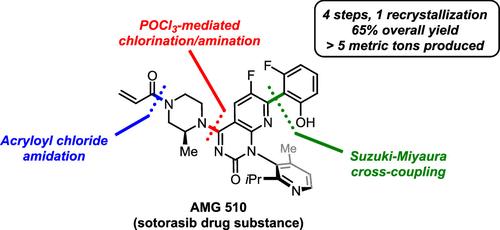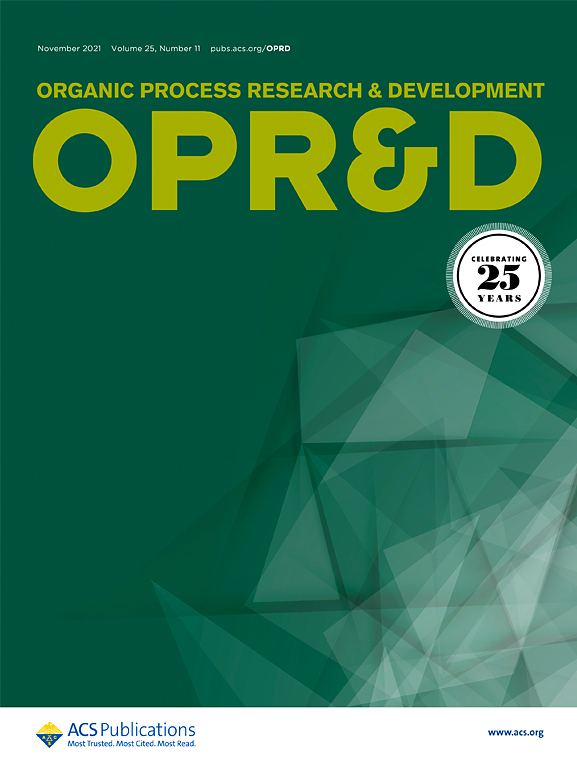Development of a Commercial Manufacturing Process for Sotorasib, a First-in-Class KRASG12C Inhibitor
IF 3.1
3区 化学
Q2 CHEMISTRY, APPLIED
引用次数: 9
Abstract
A commercial process to manufacture sotorasib (AMG 510), a first-in-class KRASG12C inhibitor, is described. Development efforts focused on rendering a fit-for-purpose early-phase route into a viable long-term commercial process through the reduction of side reactions to improve yield and product quality, as well as reducing cycle times of crystallization processes by improving particle properties and filtration times. These improvements were key to ensuring clinical supply and commercial launch. The final route consists of five synthetic operations from starting material M-1, including a telescoped two-step sequence, and a final form-setting crystallization.

一类KRASG12C抑制剂Sotorasib商业化制造工艺的开发
描述了一种生产一流KRASG12C抑制剂sotorasib (AMG 510)的商业工艺。开发工作的重点是通过减少副反应来提高产量和产品质量,以及通过改善颗粒特性和过滤时间来减少结晶过程的循环时间,将适合用途的早期路线转化为可行的长期商业过程。这些改进是确保临床供应和商业投放的关键。最后的路线包括从起始材料M-1开始的五个合成操作,包括一个伸缩的两步序列和一个最终的定型结晶。
本文章由计算机程序翻译,如有差异,请以英文原文为准。
求助全文
约1分钟内获得全文
求助全文
来源期刊
CiteScore
6.90
自引率
14.70%
发文量
251
审稿时长
2 months
期刊介绍:
The journal Organic Process Research & Development serves as a communication tool between industrial chemists and chemists working in universities and research institutes. As such, it reports original work from the broad field of industrial process chemistry but also presents academic results that are relevant, or potentially relevant, to industrial applications. Process chemistry is the science that enables the safe, environmentally benign and ultimately economical manufacturing of organic compounds that are required in larger amounts to help address the needs of society. Consequently, the Journal encompasses every aspect of organic chemistry, including all aspects of catalysis, synthetic methodology development and synthetic strategy exploration, but also includes aspects from analytical and solid-state chemistry and chemical engineering, such as work-up tools,process safety, or flow-chemistry. The goal of development and optimization of chemical reactions and processes is their transfer to a larger scale; original work describing such studies and the actual implementation on scale is highly relevant to the journal. However, studies on new developments from either industry, research institutes or academia that have not yet been demonstrated on scale, but where an industrial utility can be expected and where the study has addressed important prerequisites for a scale-up and has given confidence into the reliability and practicality of the chemistry, also serve the mission of OPR&D as a communication tool between the different contributors to the field.

 求助内容:
求助内容: 应助结果提醒方式:
应助结果提醒方式:


